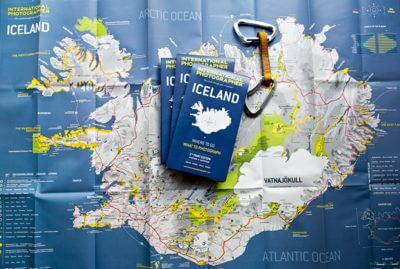Inevitably, most people get their first taste of Iceland at Reykjavík, rubbing shoulders with over half the country’s population. It may be small, but what Reykjavík lacks in size it more than makes up for in stylish bars, restaurants and shops, and the nightlife is every bit as wild as it’s cracked up to be: during the light summer nights, the city barely sleeps. Reykjavík also makes a good base for visiting Geysir, the original geyser, the ancient parliament site of Þingvellir, spectacular waterfalls at Gullfoss and the famous and sublime Blue Lagoon.
Beyond Reykjavík, Route 1, the Ringroad, runs out to encircle the island, and the wilder side of Iceland soon shows itself – open spaces of vivid green edged by unspoiled coastlines of red and black sands, all set against a backdrop of brooding hills and mountains.
The west coast is dominated by the towns of Borgarnes and Reykholt, both strongly associated with the sagas, while the Snæfellsnes Peninsula, with views of the monster glacier at its tip, is one of the country’s most accessible hiking destinations. Arguably Iceland’s most dramatic scenery is found in the far northwest of the country, the West Fjords, where tiny fishing villages nestle at the foot of table-top mountains. Ísafjörður is the only settlement of any size here and makes a good base from which to strike out on foot into the wilderness of the Hornstrandir Peninsula. Beautifully located on the north coast, Akureyri is rightfully known as the capital of the north and functions as Iceland’s second city. With a string of bars and restaurants, it can make a refreshing change from the small villages hereabouts. From Akureyri it’s easy to reach the island of Grímsey, the only part of Icelandic territory actually within the Arctic Circle; and the country’s biggest tourist attraction outside the capital, Lake Mývatn. The lake is a favourite nesting place for many species of duck and other waterfowl and is surrounded by an electrifying proliferation of volcanic activity. Nearby Húsavík is one of the best places in the country to organize summer whale-watching cruises, while just inland, the wilds of Jökulsárgljúfur National Park offer superlative hiking along deep river gorges to the spectacular Dettifoss, Europe’s most powerful waterfall. Then there are the East Fjords which, despite easy access, remain the least touristed part of Iceland, perhaps because there are no major sights – just plenty of calm, quiet, grand scenery.
South of here, Höfn is a good base from which to visit Europe’s biggest glacier, the mighty Vatnajökull, either on a skidoo trip or on foot through Skaftafell National Park, while the Jökulsárlón glacial lagoon offers the surreal chance to cruise alongside floating icebergs.
The south coast is marked by vast stretches of black, volcanic coastal sands punctuated by charming villages such as Vík, Iceland’s southernmost settlement. Inland are more mighty waterfalls, including Skógarfoss and Seljalandsfoss; the wilderness surrounding Hekla, a highly active volcano which last erupted in 2000; at least one thermal outdoor pool to soak in; and a landscape central to Njál’s Saga, one of the nation’s great, visceral Viking romances. Iceland’s most rewarding hiking route can also be found here: the five-day Laugavegur trail between extraordinary hot-springs scenery at Landmannalaugar and the beautiful highland valley of Þórsmörk. Just a quick ferry ride offshore from all this lies Heimaey, at the heart of the the Westman Islands, which hosts one of the the world’s largest puffin colonies – and carries evidence of a catastrophic eruption during the 1970s which almost saw the island abandoned.
Iceland’s barren Interior is best tackled as part of a guided tour – it’s much easier to let experienced drivers of all-terrain buses pick their way across lavafields and cross unbridged rivers than to try it yourself.

